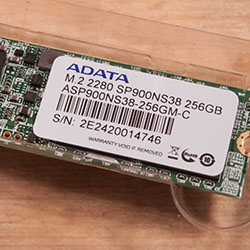The SP900NS38 256GB -
If you were to look at it for the first time, the M.2 form factor would appear to have been built for much smaller and thinner devices that what we have seen in the past. The design offers the flexibility of additional storage, but still gives you plenty of room for the controller and even cache.
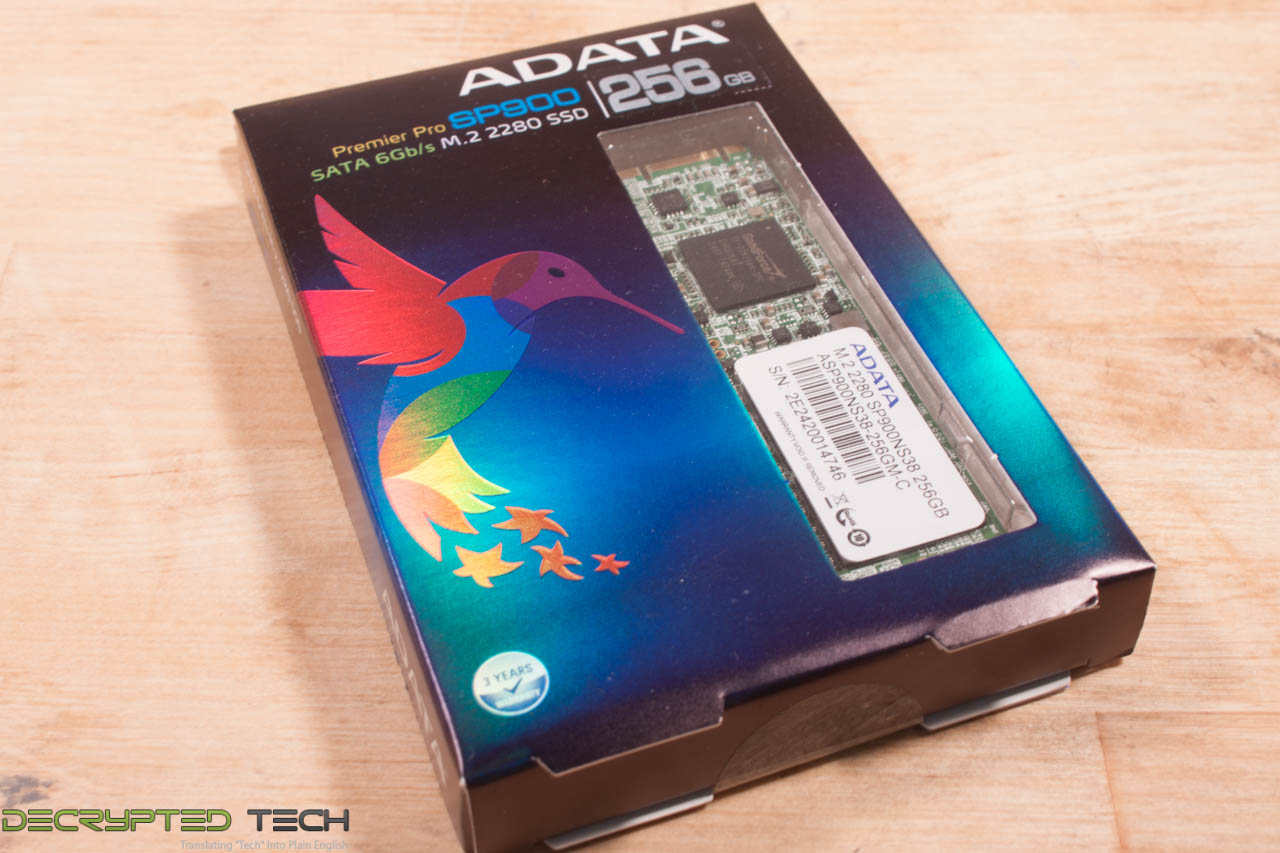 |
 |
With the SP900NS83 you can see the SandForce SF-2281VB4-SPC SATA 3.0 controller which is a very nice although common controller. At first glance there is no cache like we have seen on other M.2 SATA devices, but it is likely that there is some there given the type of drive and the market it is aimed at. We will be able to tell during the testing though. This also plays into the small form factor, it is perfect for systems like the NUC and Brix from Gigabyte.
Flipping the driver over, we find that ADATA has used their own branded flash memory. The node here are 64GB each which gives us the 256GB total raw space of the drive. We have not played around much with ADATA flash memory, but their regular RAM has been solid in our experience so we do not see any reason that it would be any different here.
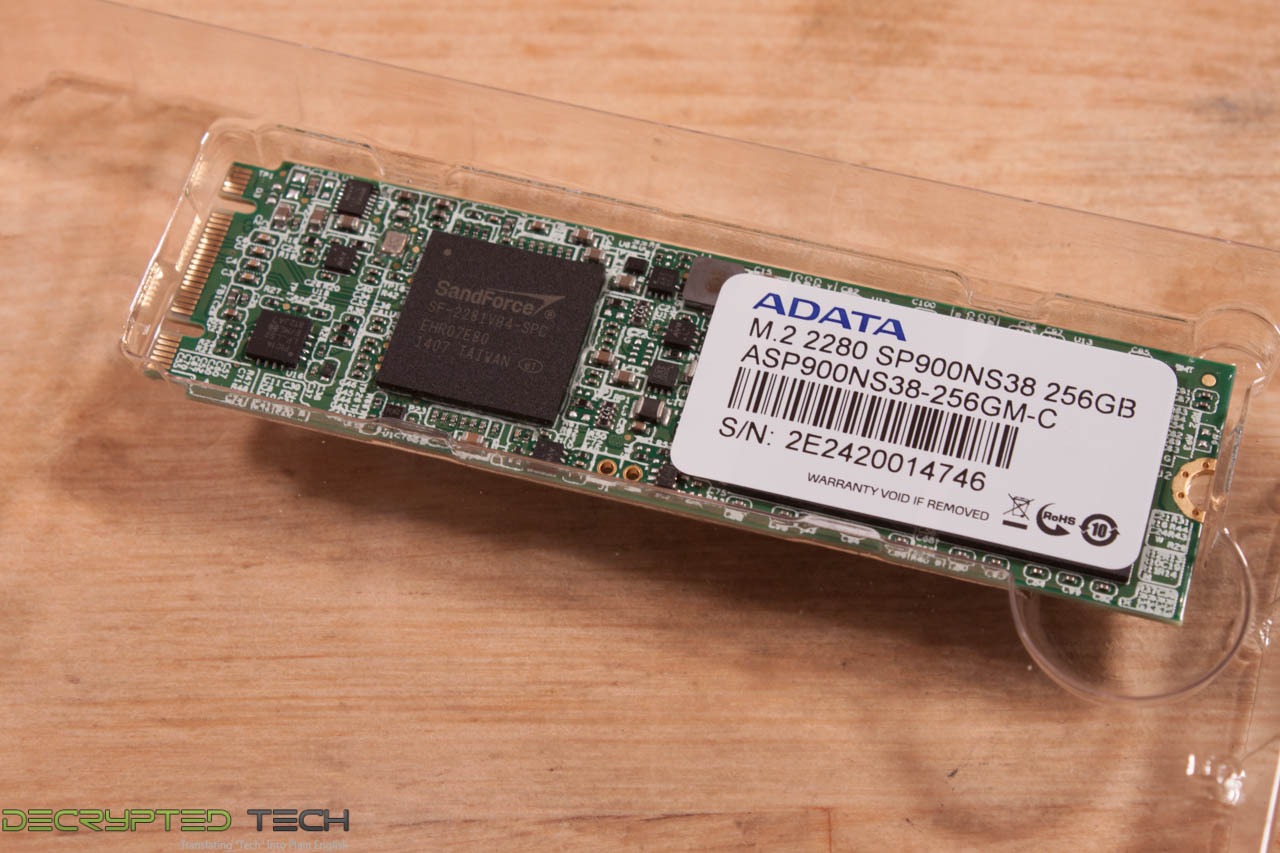 |
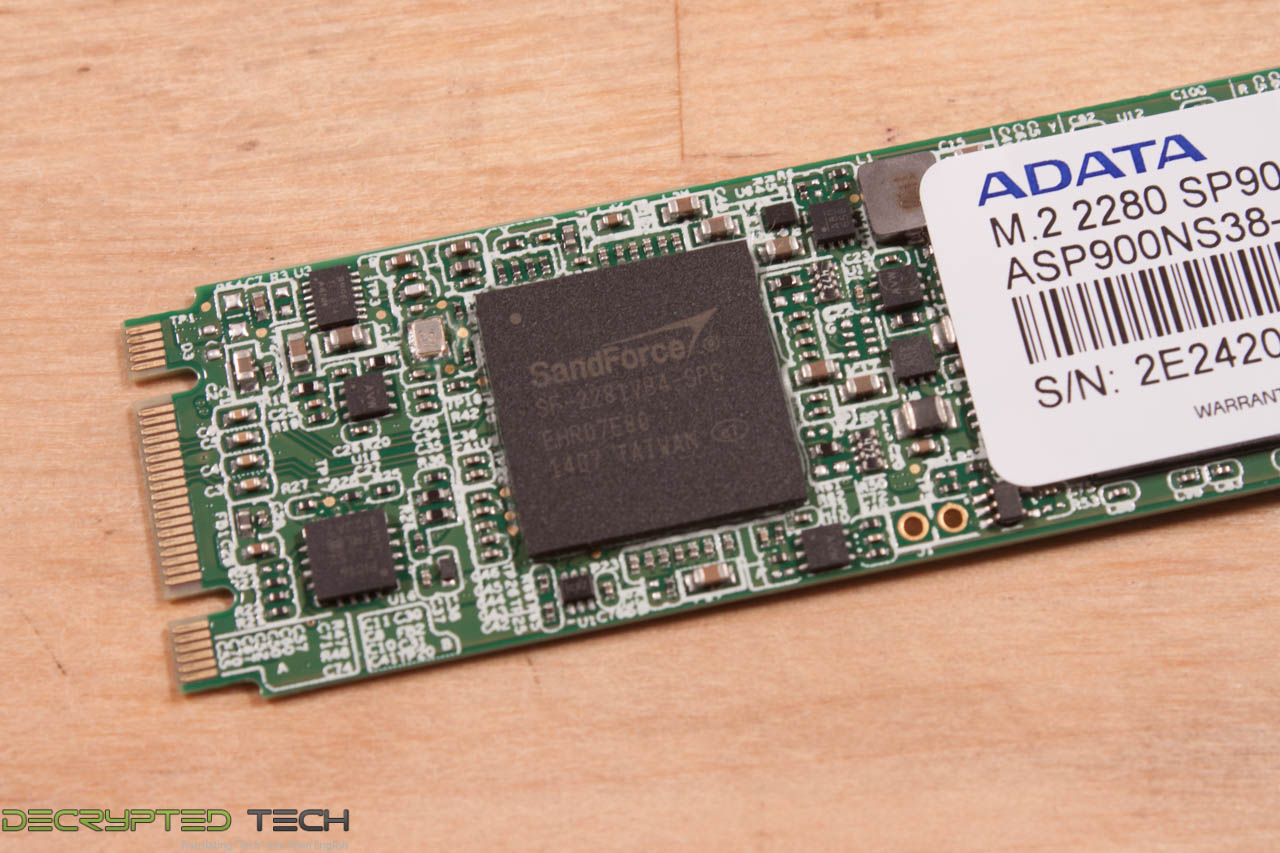 |
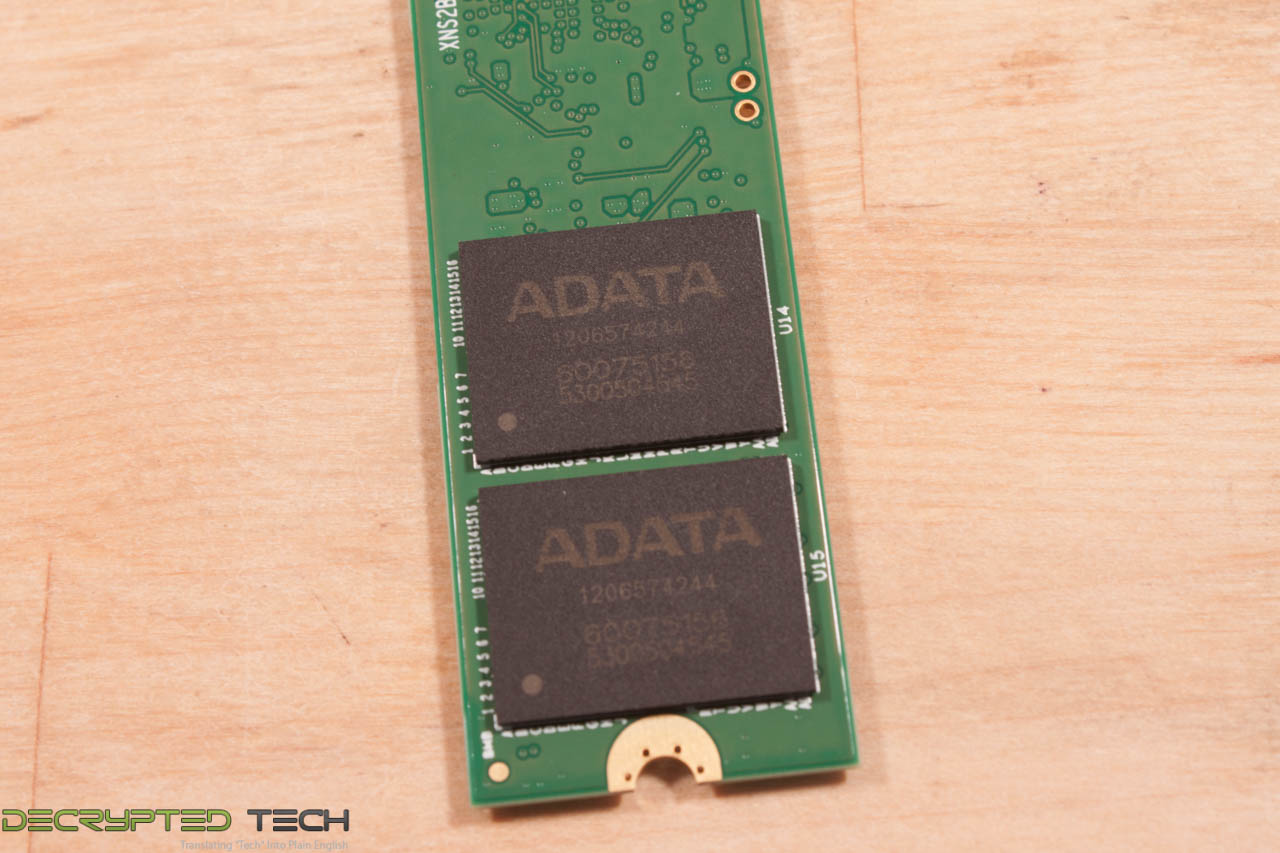 |
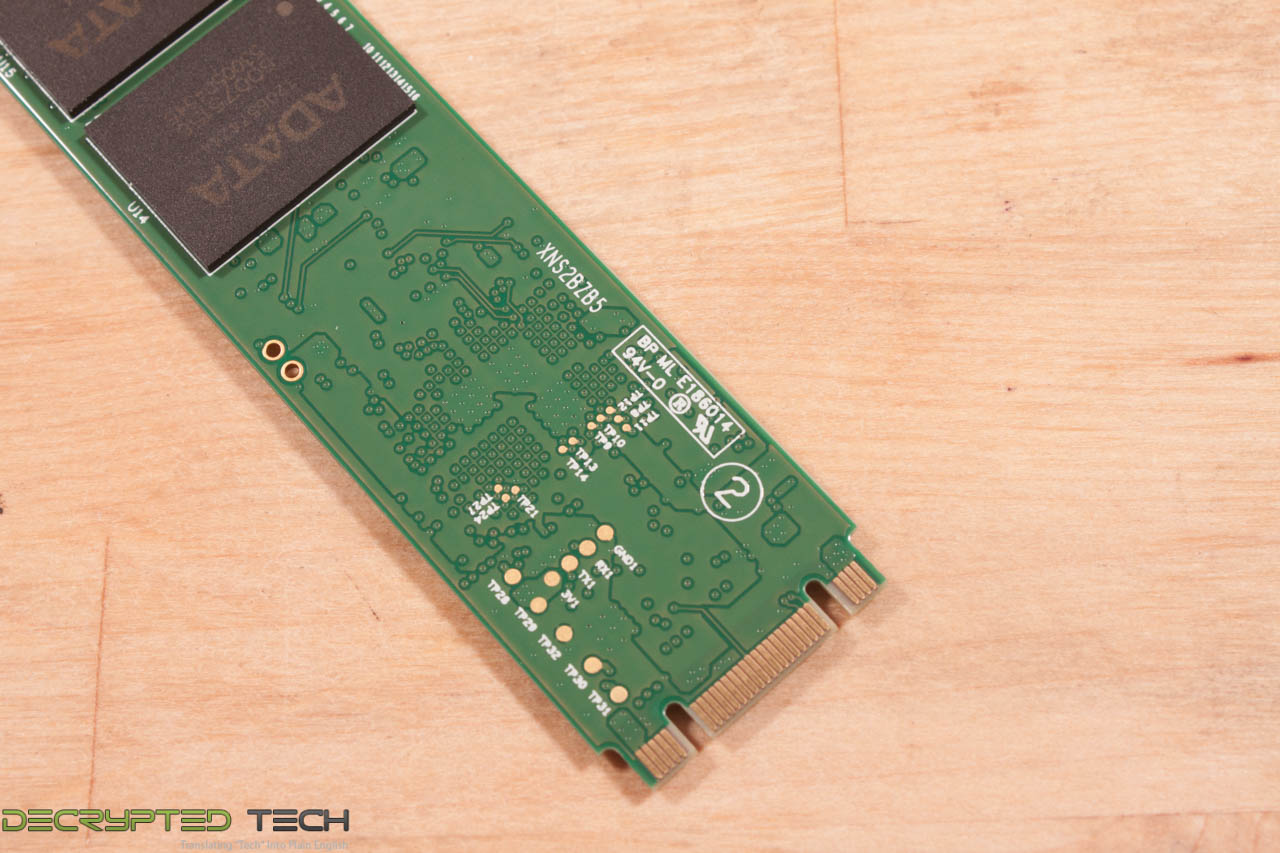
Other than the items above there is really not much more to say about the design, so let’s get into the testing part of our review.

